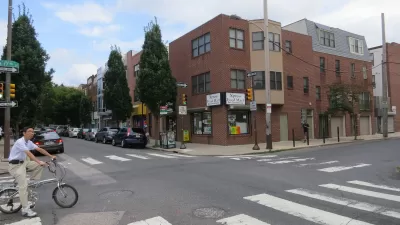The question of whether the largest generation in U.S. history will maintain its lover affair with urban living is either the elephant in the room of the million dollar question.

"A number of demographers, along with economists and real estate consultants, are starting to contemplate what urban cores will look like now that the generation — America’s largest — is cresting," according to an article by Conor Dougherty.
Dougherty launches this investigation from the starting point presented in the work of Dowell Myers, a professor of demography and urban planning at the University of Southern California. Myers published a paper in 2016 noting that American cities reached peak millennial [pdf] in 2015. Planetizen covered the original analysis of Myers's research in two separate articles—one from February 2016 and another from March 2016.
Dougherty looks at rental prices in cities around the country for evidence of one of the key claims made by Myers: that over the next few years, "the growth in demand for urban living is likely to stall."
"Apartment rents in San Francisco, Washington, Denver, Miami and New York are moderating or even declining from a year ago," writes Dougherty while citing data from Zillow.
Acknowledging that the idea that Millennials might depart the city en masse, taking high rents and gentrification with them, is "full of contours and caveats," Dougherty considers a number of opinions from leading thinkers on what will happen to cities as the Millennial Generation comes of age.
FULL STORY: Peak Millennial? Cities Can’t Assume a Continued Boost From the Young

Planetizen Federal Action Tracker
A weekly monitor of how Trump’s orders and actions are impacting planners and planning in America.

Maui's Vacation Rental Debate Turns Ugly
Verbal attacks, misinformation campaigns and fistfights plague a high-stakes debate to convert thousands of vacation rentals into long-term housing.

Restaurant Patios Were a Pandemic Win — Why Were They so Hard to Keep?
Social distancing requirements and changes in travel patterns prompted cities to pilot new uses for street and sidewalk space. Then it got complicated.

In California Battle of Housing vs. Environment, Housing Just Won
A new state law significantly limits the power of CEQA, an environmental review law that served as a powerful tool for blocking new development.

Boulder Eliminates Parking Minimums Citywide
Officials estimate the cost of building a single underground parking space at up to $100,000.

Orange County, Florida Adopts Largest US “Sprawl Repair” Code
The ‘Orange Code’ seeks to rectify decades of sprawl-inducing, car-oriented development.
Urban Design for Planners 1: Software Tools
This six-course series explores essential urban design concepts using open source software and equips planners with the tools they need to participate fully in the urban design process.
Planning for Universal Design
Learn the tools for implementing Universal Design in planning regulations.
Heyer Gruel & Associates PA
JM Goldson LLC
Custer County Colorado
City of Camden Redevelopment Agency
City of Astoria
Transportation Research & Education Center (TREC) at Portland State University
Jefferson Parish Government
Camden Redevelopment Agency
City of Claremont





























